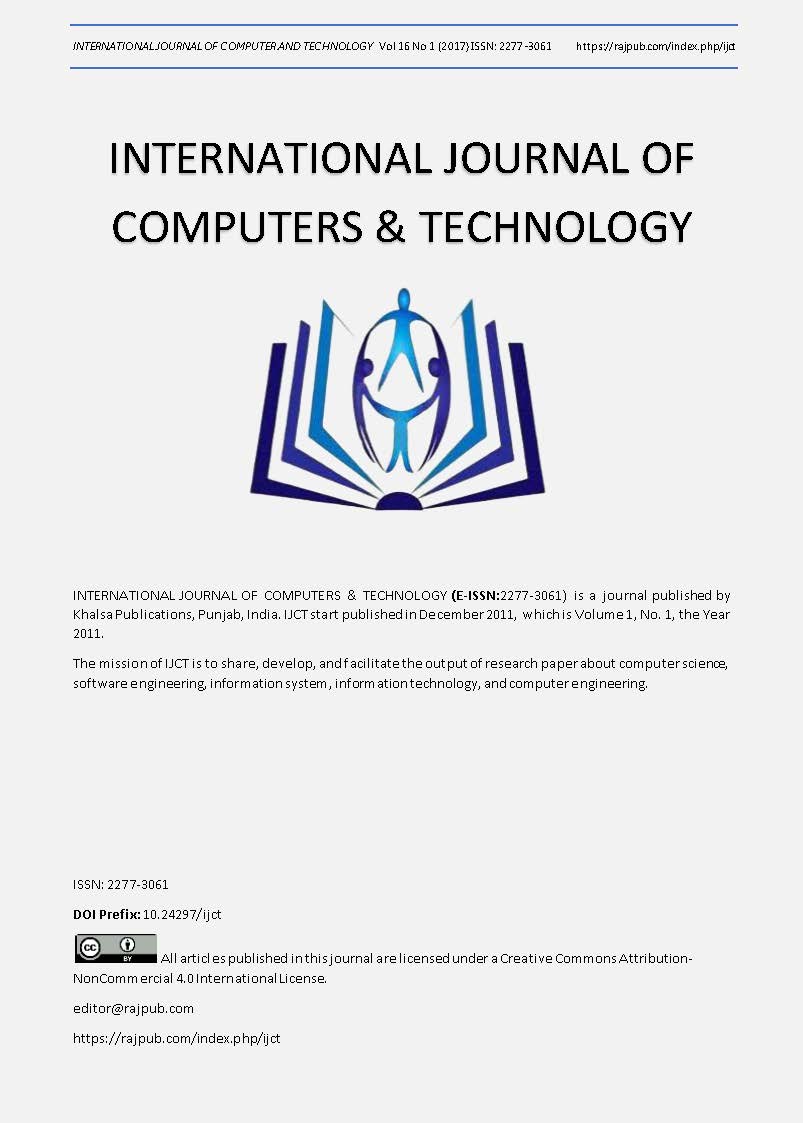Analyzing patients' EEG energy for brain death determination based on Dynamic 2T-EMD
DOI:
https://doi.org/10.24297/ijct.v16i1.5934Keywords:
EEG energy analysis; Dynamic 2T-EMD; Brain death determinationAbstract
EEG (electroencephalography) energy is an important evaluation indicator in brain death determination based on EEG analysis. In related works, the static EEG energy value can be discovered using EMD (empirical mode decomposition), MEMD (multivariate empirical mode decomposition) and 2T-EMD (turning tangent empirical mode decomposition) for EEG-based coma and quasi-brain-death analysis. However such methods are not time-varying and feasible. In this paper, we firstly propose the Dynamic 2T-EMD algorithm to evaluate the dynamic patients' EEG energy variation by the means of time window and time step method. With the time window sliding along the time axis in a time step, EEG energy of corresponding time step is computed and stored. The proposed algorithm is applied to analyze 19 cases of coma patients' EEG and 17 cases of quasi-brain-death patients' EEG. Two typical patients in coma and quasi-brain-death state and one special case who was from coma to quasi-brain-death have been taken as examples to give the algorithm performance. Results show that EEG energy in coma state are obviously higher than that in quasi-brain-death state, and even present the EEG energy change trend of every case, which can prevent loss of information and wrong analysis results caused by noise interference and provide scientific basis for doctors to evaluate patients' consciousness levels in brain death determination. The proposed algorithm will be very helpful to develop the real time brain death diagnostic system.
Downloads
References
2. Wijdicks EFM: "Brain death worldwide: accept fact but no global concensus in diagnostic criteria", Neurology, Vol. 58, No. 1, pp.20-25, 2002.
3. A. Hyvarien, E. Oja:"A fast fixed-point algorithm for independent component analysis", Neural Computation, Vol. 9, No. 7, pp.1483-1492, 1997.
4. L. Li, Y. Saito, D. Looney, et al.: "Data fusion via fission for the analysis of brain death", Evolving Intelligence Systems: Methodology and Applications, Springer, pp.279-320, 2008.
5. Gennady G. Knyazev, Jaroslav Y. Slobodskoj-Plusnin, Andrey V. Bocharov, et al.:"The default mode network and EEG alpha oscillations: an independent component analysis", Brain research, Vol. 1402, pp.67-69, 2011.
6. J. Cao, N. Murata, S. Amari, A. Cichocki and T. Takeda: "A robust approach to independent component analysis of signal with high-level noise measurement", IEEE Trans Neural Netw, Vol. 16, No. 3, pp.631-645, 2003.
7. N. Huang, Z. Shen, S. Long, M. Wu, H. Shih, Q. Zheng, N. Yen, C. Tung, and H. Liu: "The empirical mode decomposition and Hilbert spectrum for non-linear and non-stationary time series analysis", Proceedings of the Royal Society of London, A 454, pp.903-995, 1998.
8. N. Rehman and D. Mandic: "Multivariate empirical mode decomposition", Proceedings of the Royal Society A, Vol. 466, No. 2117, pp.1291-1302, 2010.
9. Julien Fleureau, Jean-Claude Nunes, Amar Kachenoura, Laurent Albera, and Lotfi Senhadji: "Turning Tangent Empirical Mode Decomposition: A Framework for Mono- and Multivariate Signals", IEEE Trans Signal Process, Vol. 59, No. 3, pp.1309-1316, 2011.
10. Z. Chen, J. Cao, Y. Cao, et al: "Qualitative evaluation and quantitative EEG analysis in brain death diagnosis for adults: An empirical study", Cognitive Neurodynamics, Springer, Vol. 2, No. 3, pp.257-271, 2008.
11. E. Niedermeyer, et al: "Coma and brain death", In Electroencephalograph: basic principles, clinical applications, and related fields, Chapter 26, Lippincott Williams & Wilkins, Baltimore, MD, 1991.
12. T. M. Rutkowski, D. P. Mandic, A. Cichocki, et al: "EMD approach to multichannel EEG data—the amplitude and phase components clustering analysis", Journal of Circuits, Systems, and Computers, Vol. 19, No. 1, pp.215-229, 2010.
13. Q. Shi, J. Cao, T. Tanaka, R. Wang, and H. Zhu.: "EEG data analysis based on EMD for coma and quasi-braindeath patient", Journal of Experimental and Theoretical Artificial Intelligence, Vol. 23, No. 1, pp.97-110, 2011.
14. Julien Fleureaua, Amar Kachenouraa, Laurent Alberaa, Jean-Claude Nunesa, and Lotfi Senhadjia: "Multivariate empirical mode decomposition and application to multichannel filtering", Signal Processing, Vol. 91, No. 12, pp.2783-2792, 2011.
15. J. Cao: "Analysis of the quasi-brain-death EEG data based on a robust ICA approach", Lecture Notes in Artificial Intelligence, Springer, Vol. 4253, No. 3, pp.1240-1247, 2006.









